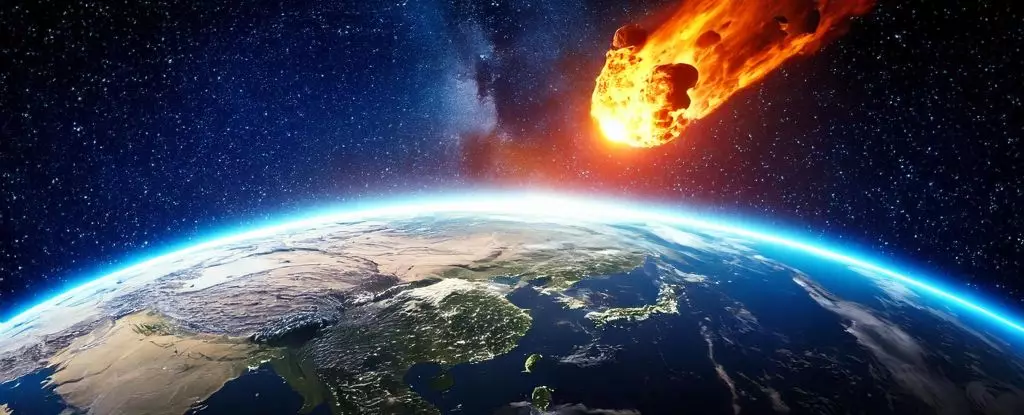As we navigate our existence on Earth, few natural threats loom as ominously as the prospect of an asteroid impact. With space littered with rocks of varying sizes, the mere thought of a catastrophic collision sends shivers down the spine. This is especially pertinent given recent simulations that delve into the potential aftermath of a collision with a hill-sized object known as Bennu. Although the chances of an impact occurring in the near future are slim, the implications of such an event are profound and significantly necessitate our attention and understanding.
Understanding the Threat: Bennu and Its Probability
Asteroid Bennu has gained notoriety as a possible contender for future hazards, especially with its current trajectory lining up with Earth’s orbit. The odds of it colliding with our planet are quantified as approximately 1 in 2,700. While that figure may appear small at a glance, it is essential to regard it as a non-negligible threat. Historically, Earth has experienced significant impacts—most notably the Chicxulub event that contributed to the extinction of the dinosaurs approximately 66 million years ago. This context provides a stark reminder that while a direct hit from Bennu may not appear imminent, the universe is unpredictable, and our preparedness is imperative.
Modeling the Catastrophe: What Simulations Reveal
Researchers at Pusan National University, led by climate scientists Lan Dai and Axel Timmerman, have undertaken a considerable analysis utilizing the Aleph supercomputer to simulate what would transpire if Bennu were to hit Earth. The simulations resulted in alarming predictions: a drop in global temperatures by 4 degrees Celsius and a significant decline in precipitation by 15%. These changes are not merely numbers on a page; they reflect the potential for profound alterations to our climate, ecosystems, and food sources.
The team focused on the collateral effects of such an impact, primarily the dust ejected into the stratosphere, estimated between 100 to 400 million metric tons. This debris would not only darken the skies, disrupting photosynthesis for terrestrial plants but also alter the atmosphere’s chemistry, leading to an extensive ozone depletion of 32%. This depletion holds particularly devastating implications for agriculture and global food systems, as crops would face increasingly inhospitable conditions.
The notion of an “impact winter”—a result of the debris blocking sunlight—brings to light the fragility of our environmental systems. According to researchers, such severe atmospheric alterations could lead to an immediate reduction of up to 30% in photosynthesis rates for both terrestrial and marine ecosystems. This looming crisis underscores vulnerabilities in global food security. The implications extend beyond immediate survival; they challenge the very fabric of ecosystems that have taken eons to evolve.
However, not all responses to such a catastrophic event are negative. Interestingly, the simulations also pointed to a rapid rebound in marine algae. This unexpected resilience was linked to nutrient-rich iron particles present in the asteroid dust, demonstrating the complex interplay between destruction and regeneration within ecological systems. Such favorability for algae hints at broader adaptability in nature, suggesting that specific ecosystems may find a way to survive, even in significantly altered environments.
While the threat of asteroid impacts looms large, the human capacity for adaptation and survival ought to be recognized. Although it is possible that a catastrophic event could drastically reduce human populations, adaptations may allow humanity to persist, albeit with significant lifestyle changes. Historically, the Earth awash in chaos has periodically rebounded, shaping the evolution of life itself.
Timmerman noted the prevalence of asteroid impacts, suggesting that medium-sized asteroids collide with Earth every 100,000 to 200,000 years. This highlights the importance of comprehending how previous impacts may have influenced not just ecological systems, but potentially human evolution, shedding light on how we might cope with impending threats.
In a world where cosmic phenomena can swiftly alter the course of life on Earth, understanding the threats we face is paramount. While the simulations of potential Bennu impacts are unsettling, they beckon actions toward preparedness and resilience. As we advance our technology and understanding of these celestial bodies, it is crucial that humanity not only braces for impact but also continuously explores avenues to mitigate potential fallout. By doing so, we embrace an unwavering spirit of resilience in the face of the unknown, proving that our existence, much like that of cockroaches, may endure against the odds.
Ultimately, whether through fostering ecological resilience or developing sophisticated early warning systems, the future of humanity depends on our willingness to confront these stellar challenges head-on. Understanding these risks is not merely about survival—it’s about laying the essential groundwork for a more informed and prepared society.


Leave a Reply